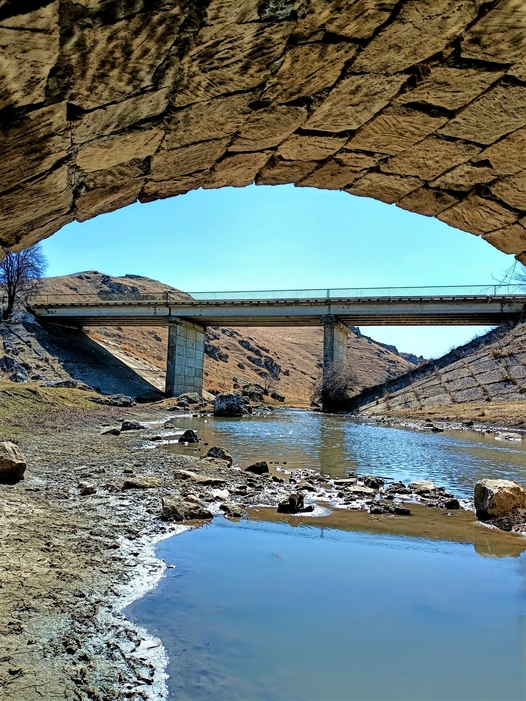Horodistei bridges
Description
As the whole village stretches only on the right side of the river Ciuhur, like all the villages in the perimeter of Ciuhur, the bridges are specific to the villages on Ciuhur. The only exception is the village of Druță, which is situated on the left side. This is the reason tha, in the past, Druța was called Stângăceni (from "Stânga" - left).
The entrance to the village of Horodiște, from the national road, is extremely picturesque, through a tunnel made of trees that creates a colourful scenery in any season and culminating with the new bridge, which opens up parallel views on either side of the cliffs. The very first eye contact with the village of Horodiște is spectacular, opening like a book full of harmonious landscapes, but also full of mystery. The suspension bridge on concrete pillars rises majestically above Cuiuhur and forms a unique photographic frame in combination with the old stone bridge. The old bridge, with its archaic stone arch design, was rebuilt in the 1960s. It is now accessible for carts and pedestrians, becoming a tourist attraction for hikers, photographers and children. The new bridge opens up another picturesque vista to the second half of the village stretching along the Ciuhur River, as well as to the most mysterious cliff of the north, also called by locals the "Rock of the Evil Spirits". From there to the largest cave in the gorge there is still a chain of cliffs that hide the medieval Turkish cemetery. Periodic treasure hunters with metal detectors come here. In the chain beyond the bridge and up to Holm, two caves are discreetly hidden: a small one, perfect for children and another with a diameter of 3 metres at the entrance. Opposite are secular wells and a spring. Large willows shade the seemingly tired waters of the Ciuhur, which widens immediately after leaving Horodiște.


 ro
ro
 ru
ru
